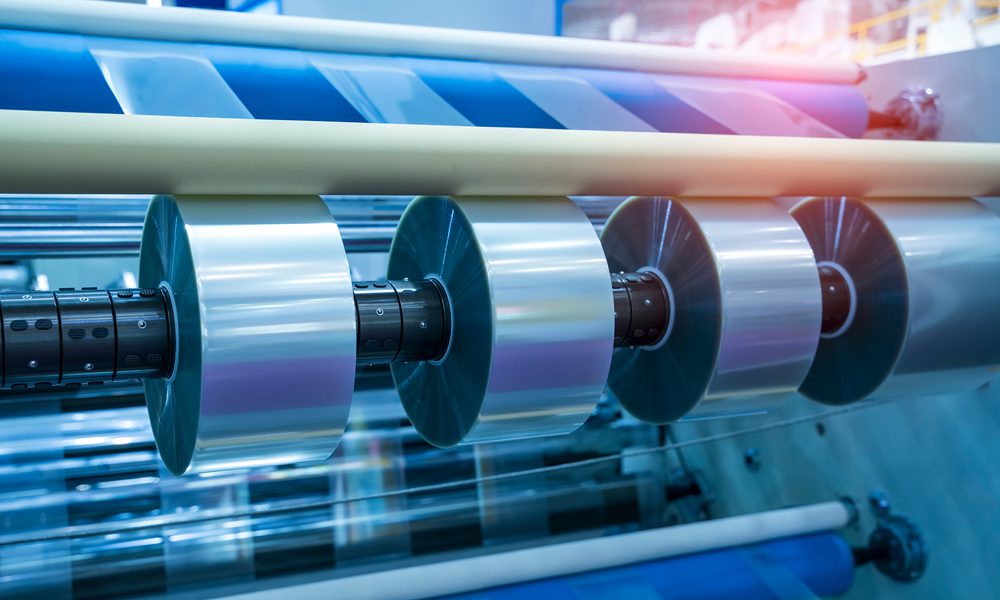Most people never stop to consider how tape is made — engineers included. That’s why converters like The Tape Lab exist, to provide unique expertise and converting capabilities for pressure-sensitive adhesives (PSA) and tape products. But if you really want to streamline product development and get the most value from your converter partnerships, you need to understand the basic components of tape in detail. Here’s a breakdown of the different layers and materials used in some common PSA tape products.
Double-sided tape
Double-sided tape is useful in a variety of industrial applications as well as stick-to-skin products like fashion tape and others.
Components of double-sided tape include:
- Release liner – The liner protects the underlying adhesive layers to maintain the tape’s integrity during storage and application.
- Carrier – The carrier gives tape structure and makes it easier to handle. Materials used to create the carrier layer include films, foams, cloth, paper or even foil materials.
- Adhesive – Adhesives used in the contact layer (the layer that actually bonds to the application site) can provide varying levels of tack and holding power to meet different performance needs.
Carriers for double-sided tapes can range from a film as thin as a fraction of a millimeter up to a thick foam that helps fill gaps in product design, or to be used as a vibration dampener.
Single-sided tape
Single-sided tape is perhaps most familiar to consumers and engineers alike. These common products can be used in everyday consumer applications or as interior components in intricate product designs.
Components of single-sided tape include:
- Release coating – Typically made of silicone, this layer allows the tape to unwind from the spool without adhering to itself.
- Carrier – Provides structure to the tape and are typically made from cloth, non-woven, foam, film or foil materials.
- Adhesive – The pressure sensitive adhesive is applied to only one side of the carrier. Sometimes applications require an additional layer of woven cloth or glass strands to provide additional support. These types of single-sided tapes most commonly feature rubber-based adhesives.
Like most PSA tapes, adhesives for single-sided tapes are typically made from rubber, silicone or acrylic materials. Additional applications for single-sided tapes include cloth tape, wound closure tape, foam tape, surface protection tape and UHMW tape.
Adhesive transfer tape
Adhesive transfer tapes feature pressure-sensitive adhesives that are coated directly on a siliconized release liner. Imagine a floating layer of adhesive with no internal structure to speak of. These types of tapes are most commonly used in industrial applications as bonding tape, laminating adhesive tape or for box and bag sealing applications.
Components of adhesive transfer tape include:
- Liner – These liners are typically siliconized and made of paper or film.
- Adhesive – The adhesive layer can come in a variety of thicknesses and tolerances to meet nearly any application need. For example, rubber adhesives are used for indoor applications because of their high initial bond strength. Rubber adhesives perform better in controlled environments with no elevated temperatures; while acrylic adhesives are rated better for outdoor use and elevated temperature applications because they can withstand temperatures between 250-350 degrees and the bond strengthens over time.
Transfer tapes are commonly used in applications where material stack up issues may be a concern. Transfer tapes don’t have a carrier that adds bulkiness or stiffness to the tape construction. These kinds of products are useful because they are more conformable to different applications, but they are also more difficult to dispense and don’t reinforce the substrate to which they are applied.
Tape offers possibilities and profitability
It’s important for engineers to understand what options they have available because tape converting services can provide a shortcut to efficient product development. An experienced tape converter can help engineers better understand how tapes and other pressure-sensitive adhesives can be used to augment and enhance product performance. By diving down and understanding tape product and materials on a detailed level, engineers and product developers can streamline the development process and bring products to market faster and more efficiently.
Want to learn more about your options for contract manufacturing using tapes and other pressure-sensitive adhesives? Contact The Tape Lab and we’ll help you choose the right materials and processes for your products.
